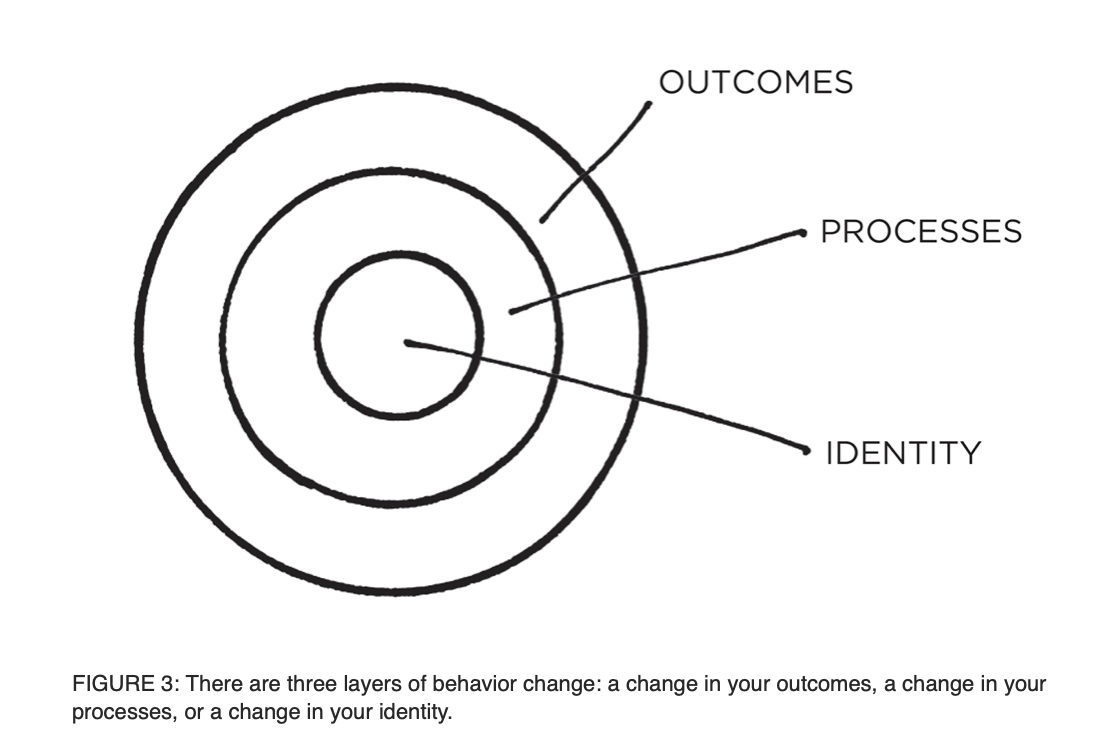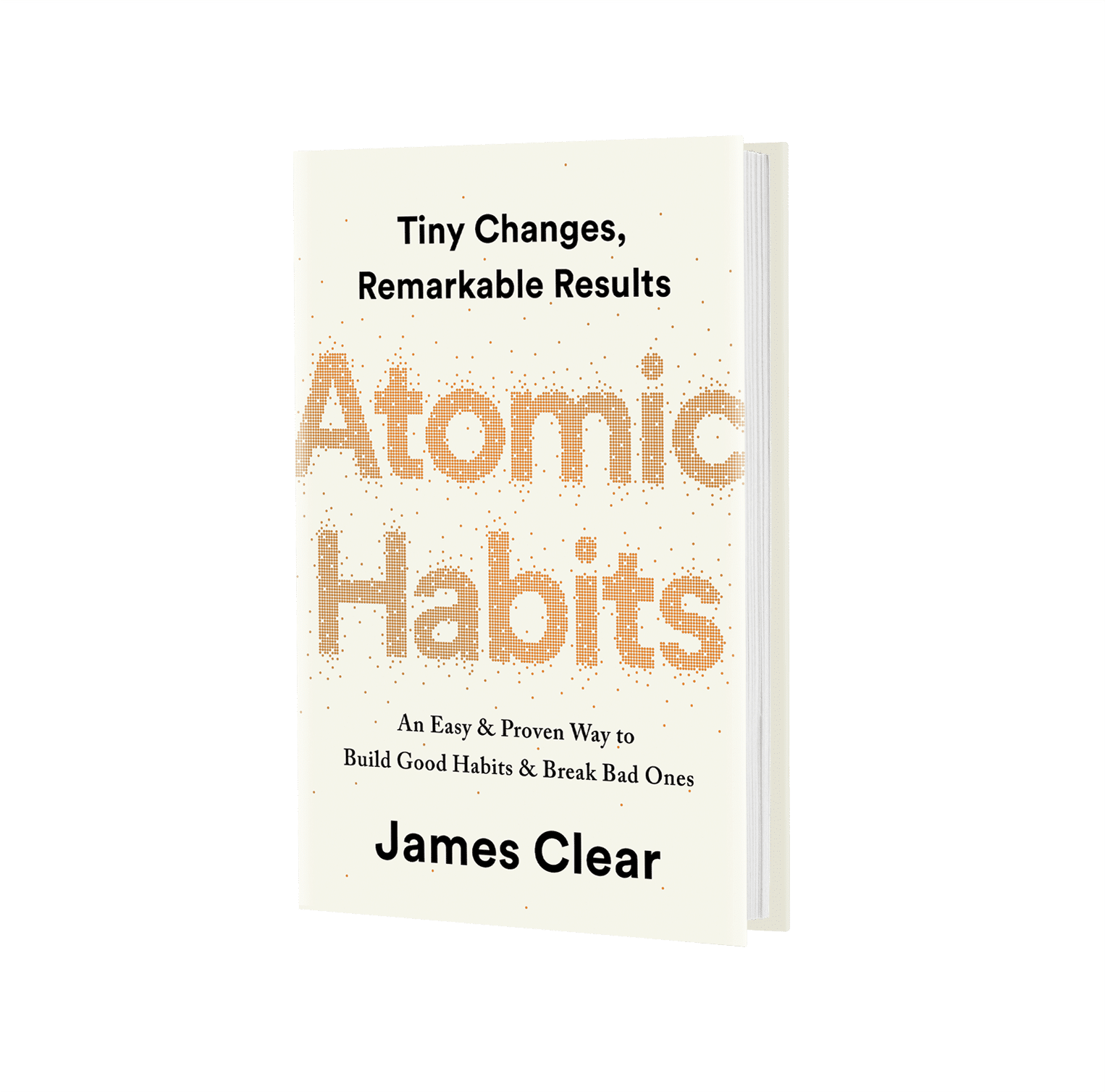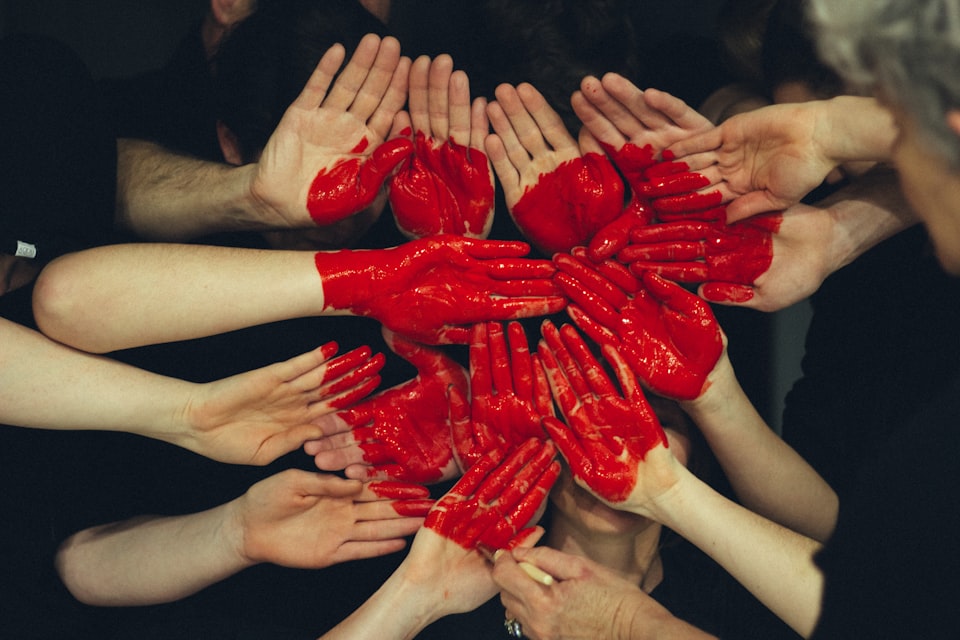If there's any book I wish to imbibe on a daily basis for it's ideas to stay fresh in my mind, it's this one. Here's an attempt to summarize the key concepts that I learnt, for people who might not have the time to read the whole book or who want to get a flavor of it before reading.
- Tiny changes, remarkable results.
- The Plateau of Latent Potential.
- We don't rise to the level of our habits, we fall to the level of our systems.
- Habits & Identity.
- The Cue, The Craving, The Response, The Reward.
1. Tiny changes, remarkable results
We tend to think of a win or a loss as an event that happens at one definitive moment. This applies to everything - habits, business, relationships, etc. Most big wins or losses comprise of small changes that happen gradually. Here's an excerpt from the book:
1% worse every day for one year = 0.99 raised to the power of 365 = 0.03
1% better every day for one year = 1.01 raised to the power of 365 = 37.78
Just improving 1% everyday on something which is seemingly nothing, would make us 37 times better in that thing in a year. But deteriorating at 1% everyday brings us to almost 0. Habits are the compound interest of self-improvement. Like money, habits compound over time. It's a double edged sword. Time is our best friend for making good habits and our worst enemy for bad habits.
We go to the gym for a week (or even a month) and we see ourselves in the mirror - we don't normally see a difference. This usually causes demotivation and we tend to slide back to our previous routines. This slow pace also lets bad habits creep in - "It's fine if I don't go to the gym today, nothing happens in a day anyway". The next thing we know, it's been a few months and we've forgotten the difference between how 10 and 20 kg weigh like. However, if we trust the process and keep putting in the work, the results will start to appear sooner or later. This mindset helps us think long term which facilitates compounding. We sacrifice short term whims for long term gains.
2. The Plateau of Latent Potential
Every new habit is boring and unfruitful at the beginning. This dry demotivating period of time where the habits don't seem to produce results, is called the Plateau of Latent Potential. We must realize that it's not that nothing is happening, it's just that the potential is being built up. Once we cross this plateau, the habit becomes part of us and we keep up with it no matter what.
3. We don't rise to the level of our habits, we fall to the level of our systems
When we try to build a good habit or break a bad one, we do fail. This is the reality. Does this mean that we are wrong? Absolutely not. It means that we probably don't have a good system for our habits. When we have a good system and process in place, we have a plan in our mind and we have a contingency plan to fall back to even when we fail.
So we should spend time focusing on designing systems and not on thinking of our goals. "Winners and losers have the same goals", but the difference between them is the system they have. Goals restricts our happiness in a way that makes us think, "If I achieve this goal, I'll be happy", which is seriously misguided. Achieving a goal is only momentary. Goals let us win the game, but systems let us keep playing the game. If we build our systems to be something we love, our happiness is not tied to the future because we're enjoying the journey as it is. Realistically we do fail often, but that's where our system is going to save us as we've already planned for our actions when we encounter a failure. One way of planning for failure is to have the rule of never skipping a habit two days in a row.
4. Habits & Identity
Taking the mindset shift deeper, there are 3 levels of behavior change. The outermost layer is the outcomes, the middle layer is the systems/processes, the inner most layer is identity (checkout the diagram from the book below). All three layers are important in their own way, but the direction of approach is the problem.
We usually approach habits from the outermost layer. Consider the habit of waking up early in the morning. When we try to set this as a goal, we usually think this way - I want to wake up early in the morning (Outcome). This way, I can get more done and have a lot more time in the morning (Process) and this will help me become an early riser or a morning person (Identity).

Consider approaching this from the innermost layer - "I want to become a morning person (Identity). Being a morning person, I'll have more time in the mornings and get ready for the day (System). To satisfy my identity and get my system running, I'll wake up early every day (Outcome)". It's not about what we do, it's about who we are. It's easier to stick to a habit if it's part of our identity. If we believe ourselves to be someone, we are more likely to perform actions and build routines that align with our belief.
The author calls them little "votes". Every time we perform an action that aligns with our identity, we cast a small vote in favor of that identity. This reinforces our identity stronger every time and gamifies the whole process. On the other hand, if we do the opposite, we cast a vote against our identity.
Votes also have weights associated with them. If I wake up on time even after going to bed late, it's like casting myself 5 or 50 votes on that day. I can always look back to days like these and think, "I'm an early riser because I've woken up on time even when it was hard". This concept has saved me from being lethargic on numerous days.
This gives us the power to update our beliefs, to unlearn harmful patterns we may have developed and to expand our identity. It's a perpetual feedback loop where our identity (the innermost layer) drives our habits (the outermost layer) and our habits reinforce our identity. Our system (the middle layer) is the fuel on which this perpetual machine is running.
The goal is not to read a book, the goal is to become a reader.
The goal is not to run a marathon, the goal is to become a runner.
The goal is not to learn an instrument, the goal is to become a musician.
5. The Cue, The Craving, The Response, The Reward.
A habit is a behavior that we exhibit on autopilot. Our brain builds a habit to reduce it's effort and put the action into autopilot. The simplest example is brushing - do we think about brushing every day? We just do it like a robot. For a habit to become an autopilot, it has to go through a number of repetitions. All habits - good or bad - can be broken down into 4 steps - The Cue, The Craving, The Response, The Reward.
The cue is the trigger - the moment our brain recognizes that it's time to do a habit (waking up and going to bed). The craving is the desire or motivation to do it (the desire to be hygienic). The response is the actual act of doing it (brushing your teeth). The reward is the end goal of the habit (having good oral hygiene) and it loops back to the cue. This is a neurological feedback loop called the habit loop.
All of this happen subconsciously and the brain is quick to map out a course of actions as soon as it recognizes a cue. This makes habits powerful and dangerous depending on how it is used. So to build (or break) a habit, the author outlines 4 steps (and their logical inversions).
How to create a good habit:
The 1st law (Cue): Make it obvious.
The 2nd law (Craving): Make it attractive.
The 3rd law (Response): Make it easy.
The 4th law (Reward): Make it satisfying.
How to break a bad habit:
Inversion of the 1st law (Cue): Make it invisible.
Inversion of the 2nd law (Craving): Make it unattractive.
Inversion of the 3rd law (Response): Make it difficult.
Inversion of the 4th law (Reward): Make it unsatisfying.
Key concepts from the 4 laws of behavior change
- Recognizing the cue is the first step to take control. When making a habit, it's important to make the cue as much visible as possible. The vice versa works for breaking a habit. If we want to read daily, we should keep a book in a place that we notice every day. Seeing this from an identity standpoint, a reader will always have a book handy.
- Pointing and calling - Whenever we encounter a cue, we should try to say it out to ourselves. Or take a friend's help with pointing out any bad habits or patterns we may have - this might help us recognize the cue we might have missed. When I read this book, I thanked my friend for pointing out some of my habits. Looking back, I had corrected some of my actions solely because of that.
- Habit Stacking - This is a way of designing our cues around our existing habits. If we insert our new habit before or after an existing habit, that will act as a cue to begin our new habit - "After/Before I do X (a current habit), I will do Y (the new habit)".
- Environment matters more. Designing our environment to align with our identity and habits is an effective way to affirm our beliefs and follow our habits.
- We should mingle with groups where our desired behavior is the normal behavior. Humans are mimetic creatures. We tend to imitate the behaviors of the people around us. So if we mingle with the right people that align with our identity and goals, it makes the habit seem more achievable as everybody around us is doing it.
- "Perfection is the enemy of good" - There's no problem with aiming for perfection except when it interrupts us from being good. The problem arises when we think either it should be perfect or there's no use. That's not true. It doesn't have to be perfect.
- We need to get the reps in for an action to turn into a habit. For that to happen, we need to do something no matter how small it is. Moving slower is better than moving backward or staying still. Small, corrective actions over repetitions have proven to be more useful than big changes.
- The Law of Least Effort - The brain is wired to conserve energy and it is human nature to follow anything that takes the least amount of effort. This is where the 2-minute rule comes in - any new habit should take only two minutes to do. Instead of going to the gym, try to focus on putting on gym clothes/shoes. Instead of reading a chapter everyday, try reading a page or a sentence. The most difficult part of any task is getting started. The 2-minute rule breaks the task down to it's simplest form to overcome this. Once we get started, we most likely won't stop just because of the fact that we've started. Even if we do stop at the end of the 2-minute mark, it's still better than doing nothing and hating ourselves for it.
- The Cardinal Rule of behavior change - What is rewarded is repeated, what is punished is avoided. It's the way our brain works. The ending of every habit is important as it sets the base for the next iteration. If the habit ends in pleasure, we know that it was worth the effort and we are more likely to repeat it. If it ends in pain, we know that this should not be repeated. It's important for the habit to be enjoyable for it to last. One way of gratifying our efforts is habit tracking. I use an app for tracking my habits. The idea is that when we can quantify the streak, that will serve as a reward for the habit. It gamifies the whole process and it is so satisfying to see the numbers go up every day.
Personal Note
I read this book roughly six months ago and it has been game changing. I was able to relate to this book a lot, especially to the pitfalls in building sustainable habits. I've built around 7 new habits since then through habit stacking & tracking, the 2-minute rule and votes. I've crossed the plateau of latent potential for some of them and still pushing my way through for the rest. But I've managed to build systems and failsafe mechanisms for each of them. I'm looking forward to see my habits compound over time. Thanks for reading. Pick up a copy of this book. You'll thank yourself later. Peace out.



